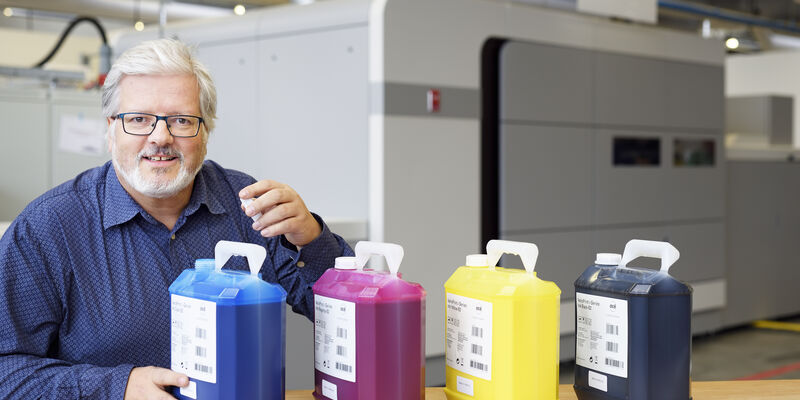
- Research
- 16/02/2017
The science of printing
Herman Wijshoff conducts research into inkjet technology for printer manufacturer Océ and has since eighteen months ago also been part-time Professor of Fluid Dynamics of Inkjet Printing at the TU/e Department of Mechanical Engineering. In this way the TU/e alumnus forms a bridge between product developers and academia. On February 10 he will present his inaugural lecture.
In this day and age nearly everybody has a dirt cheap and first-rate inkjet printer at home. Yet the development of this printing technology is anything but finalized; the design of super-fast printers that can replace today’s printing presses, including the matching ink and paper, still holds enough challenges for the industry and science alike. That is why the big Dutch printer manufacturer Océ is cooperating closely with various universities, including TU/e. In the summer of 2015 this cooperation was affirmed by the part-time professorship of Herman Wijshoff, who has ever since his graduation at the TU/e Department of Applied Physics been in the service of this company from Venlo.
The chair was set up also thanks to his own initiative, Wijshoff explains in his workroom in Gemini. “Fortunately Océ realized the strategic importance of such a construction, so they were prepared to finance my appointment here in Eindhoven – for one day a week.” For many years Wijshoff had been working together with professor Harald van Brummelen, who heads the Eindhoven Multiscale Institute of TU/e. “Since Harald’s move from Delft to Eindhoven I already used to come here often as a guest researcher.”
The goal that Wijshoff and his colleagues strive to attain is to understand all the aspects of inkjet printing down to the last detail, so as to be able to design new, better printers by means of that knowledge. Computer models, which supplement theoretical and experimental research, have an important role within his chair. “At Océ we focus in particular on printers that can replace today’s offset printing presses, in which context you should think of speeds up to three thousand images per minute. The development of a new prototype easily takes a hundred people a few years. If good models help you to arrive at a finished product while saving one or two design stages, you can work out yourself how much that saves approximately. Moreover, you can put your product on the market sooner, with all the competitive advantages that entails.”
“Interaction between science and application”
Last autumn Océ together with TU/e and the University of Twente (where Wijshoff obtained his PhD in 2008) started a FOM Industrial Partnership Programme, within which twelve PhD candidates are appointed, four postdocs and two working party leaders. Half of these people will be conducting research within the R&D department of Océ. The program will encompass the whole inkjet printing process – from the operation of the print heads, the properties of the ink drops and their interaction with the medium used (mainly paper, but also glass or plastic). This calls for models that can make the link between highly diverging length scales: from printers several meters high to the minuscule fibers in the printer paper: ‘multiscale modelling’, in short – one of the strengths of TU/e.
In his inaugural lecture Wijshoff emphasizes the history of inkjet printing and how crucial the continuous interaction between science and the industry has been in the development of this technology. He places the beginnings of that history in a very distant past, for that matter. “You could regard the cave paintings from the Stone Age as expressions of an inkjet technique: they were made by blowing a paste with colorant through a hollow bone. In the 18th century it was found out that surface tension was the cause for the break-up of a thin jet of liquid into drops, not gravity. Later, in 1860, this led to the first modern inkjet printer, for printing telegraph messages. That interaction between science and application has continued to this very day.”
Discussion